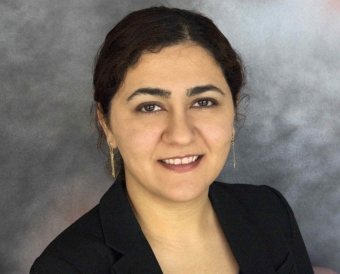
Date:
Location:
Title:
ABSTRACT
Stable two-dimensional materials are promising for nanoelectronics due to their relatively small form factor and great variety in chemical and electronic structure, allowing for the design of light-weight and low-cost materials for devices such as transistors, solar cells, and lasers. Here, I will present our recent efforts at understanding the optoelectronic function of 2D and layered materials using first-principles theory, emphasizing the role of defects and electron-phonon interactions; two phenomena that will be present in and can dominate the properties of real materials, particularly in low dimensional systems with reduced screening. We utilize density functional theory (DFT) and many-body perturbation theory (MBPT) to describe excited state transitions. To describe the role of phonons, we apply the recently developed special displacement method that describes the effective exciton-phonon interaction at a given temperature within the Harmonic approximation. For monolayer GeSe, a promising material for photocatalysis, MBPT calculations predict that the presence of a point defect results in localized mid-gap states and spatially confined excited states that can be described as localized Wannier-Mott excitons. With the inclusion of phonons, the optical absorption spectrum of pristine GeSe is red-shifted by ~ 0.1 eV, with both acoustic and optical phonons coupling to the excitonic state. To better understand the role of exciton-phonon interactions in low dimensions, we study the DFT-predicted band gap renormalization for a series of 2D materials. We show that the strength of electron-phonon interactions is highly dependent on the bonding structure. Time permitting, I will also present recent studies focused on understanding the coupling between phonons and change in polarizability in the layered material, 1T-TaS2. Time-dependent DFT calculations explain the coupling of structural distortion with light, providing a simple physical explanation for the observation of the coherent 2.4 THz charge density wave amplitude mode observed in this system.
BIO
Dr. Sahar Sharifzadeh is an Associate Professor at Boston University. She obtained her PhD from Princeton University, working under the guidance of Prof. Emily Carter, and subsequently joined the Molecular Foundry at Lawrence Berkeley National Laboratory as a postdoctoral fellow and project scientist in the group of Dr. Jeffrey Neaton. Prof. Sharifzadeh was awarded the Department of Energy Early Career Award in 2017, the National Science Foundation Early Career Award in 2019, and the Boston University College of Engineering Early Career Award in 2019. Her research focuses on first-principles computational modelling of materials.
Hosted by Michael Chabinyc. Download event flyer.



